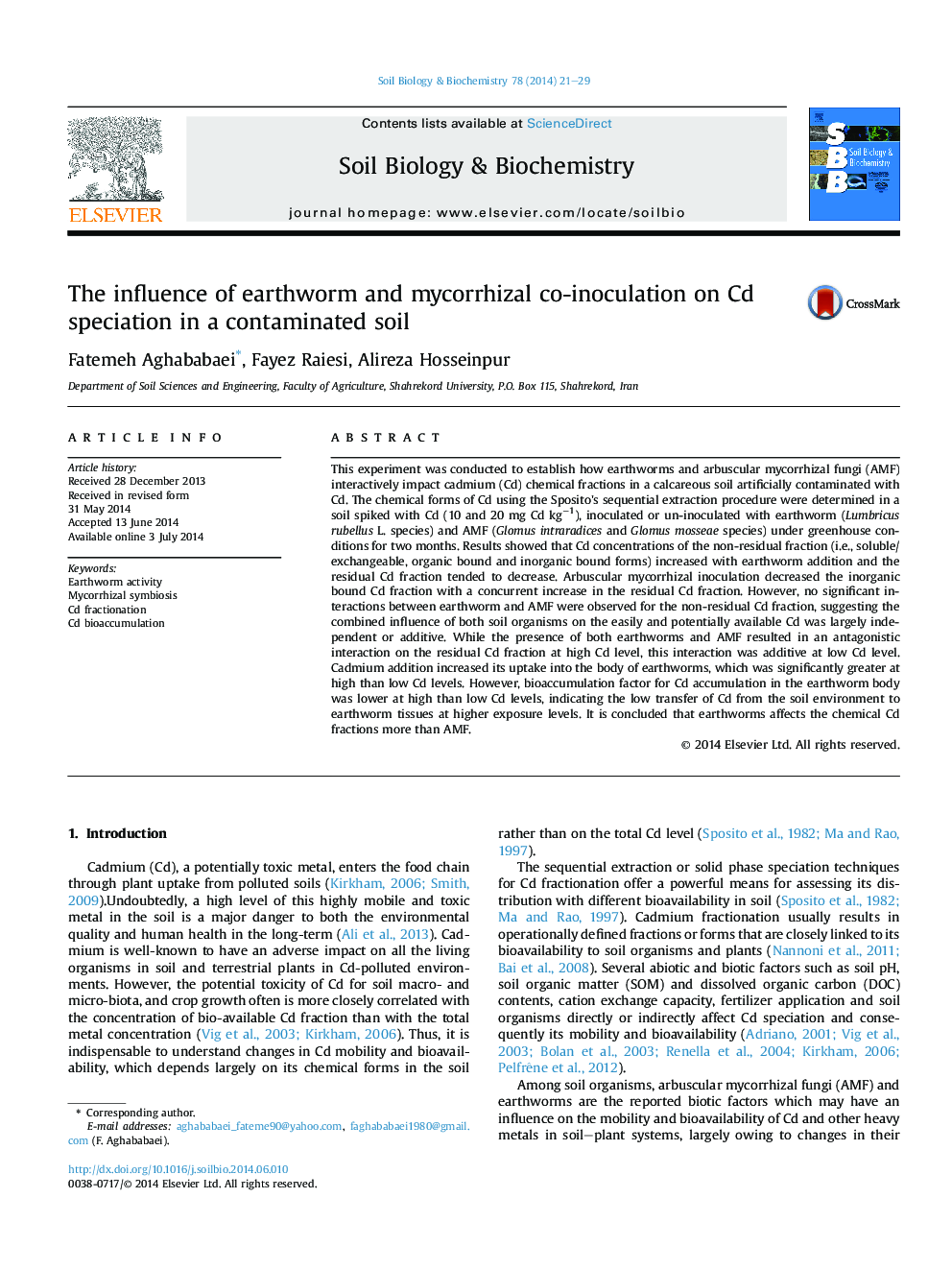| Article ID | Journal | Published Year | Pages | File Type |
|---|---|---|---|---|
| 2024565 | Soil Biology and Biochemistry | 2014 | 9 Pages |
•Earthworms increased the non-residual, but decreased the residual Cd fractions.•Mycorrhizae increased the residual, but decreased the inorganic bound Cd fractions.•Interactive influence of the two organisms on the non-residual Cd fraction was additive.•The residual Cd fraction was affected both antagonistically and additively.•Cd bioaccumulation in earthworm body was lower at high than low Cd levels.
This experiment was conducted to establish how earthworms and arbuscular mycorrhizal fungi (AMF) interactively impact cadmium (Cd) chemical fractions in a calcareous soil artificially contaminated with Cd. The chemical forms of Cd using the Sposito's sequential extraction procedure were determined in a soil spiked with Cd (10 and 20 mg Cd kg−1), inoculated or un-inoculated with earthworm (Lumbricus rubellus L. species) and AMF (Glomus intraradices and Glomus mosseae species) under greenhouse conditions for two months. Results showed that Cd concentrations of the non-residual fraction (i.e., soluble/exchangeable, organic bound and inorganic bound forms) increased with earthworm addition and the residual Cd fraction tended to decrease. Arbuscular mycorrhizal inoculation decreased the inorganic bound Cd fraction with a concurrent increase in the residual Cd fraction. However, no significant interactions between earthworm and AMF were observed for the non-residual Cd fraction, suggesting the combined influence of both soil organisms on the easily and potentially available Cd was largely independent or additive. While the presence of both earthworms and AMF resulted in an antagonistic interaction on the residual Cd fraction at high Cd level, this interaction was additive at low Cd level. Cadmium addition increased its uptake into the body of earthworms, which was significantly greater at high than low Cd levels. However, bioaccumulation factor for Cd accumulation in the earthworm body was lower at high than low Cd levels, indicating the low transfer of Cd from the soil environment to earthworm tissues at higher exposure levels. It is concluded that earthworms affects the chemical Cd fractions more than AMF.
